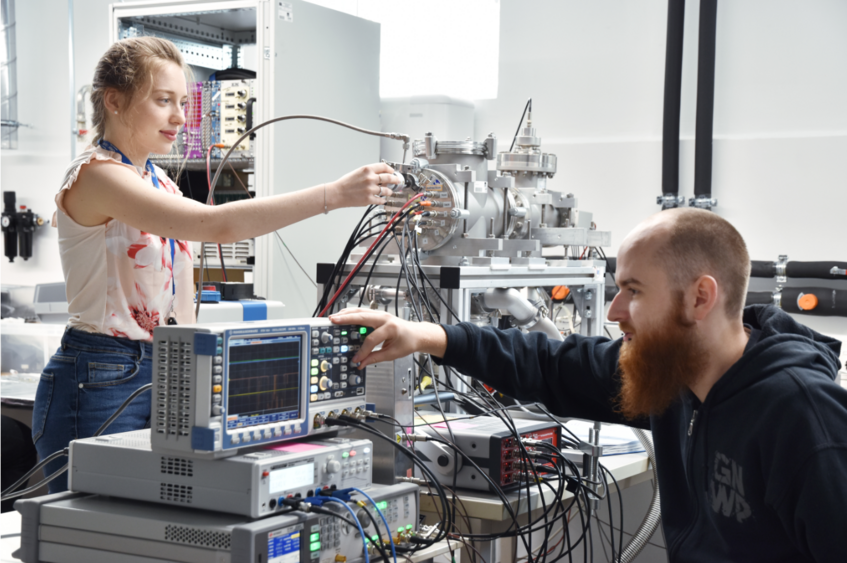A low energy proton source for ASACUSA’s matter studies

© Doris Pristauz-Telsnigg
Title of the project: Physics of a non-neutral plasma within a cusped magnetic field
Name of the VDSP student: Andreas Lanz
Project supervised by: Eberhard Widmann
As members of the charged particle group in the ASACUSA Cusp collaboration at CERN we are interested in the ground state hyperfine structure of antihydrogen. Due to the Long Shutdown 2 at CERN it is not possible to receive antiprotons from the Antiproton Decelerator, thus, to not lose 2 years without taking experimental data, we developed and tested a low energy proton source to perform matter studies in our apparatus.
Instead of mixing positrons and antiprotons in our mixing trap to create antihydrogen, electrons and protons are going to be used to form hydrogen. The formation takes place under same conditions as for antihydrogen, hence, the studies can be adapted to antimatter. The source utilises electron impact ionisation in molecular hydrogen. This process results in the creation of both ionised hydrogen molecules and protons, which can be separated due to their different mass. This is done using the rotating wall technique, where specific frequencies of the applied rotating potential compress the protons but deflect the heavier ions. Experiments at the SMI, where the source was tested at low current on the electron gun, showed that we can achieve about a hundred protons per second, which was estimated to be a few millions per second if the actual operating current is applied.
